France
Three Days In Avignon – Provence
Discovering Avignon is pure delight. It delivers a trove of diverse experiences and makes a perfect base for exploring Remy, Arles, Les Beaux, and L’Isle-sur-la-Sorgue.
We rented a one-bedroom, sun-filled apartment on the top floor of an expertly renovated historic building on Rue Vieux Sextier. Our living room and kitchen overlooked the bustling pedestrian street where outdoor restaurants attracted a lively flow of diners, while our bedroom window overlooked the rooftop of the domed neoclassical style, synagogue. Built in 1846, the synagogue replaced the original 13th-century Jewish house of worship, which was destroyed by fire. It stands within the one remaining entrance and archway to the historic Jewish ghetto. The interior is beautiful in its quiet elegance and architectural design.
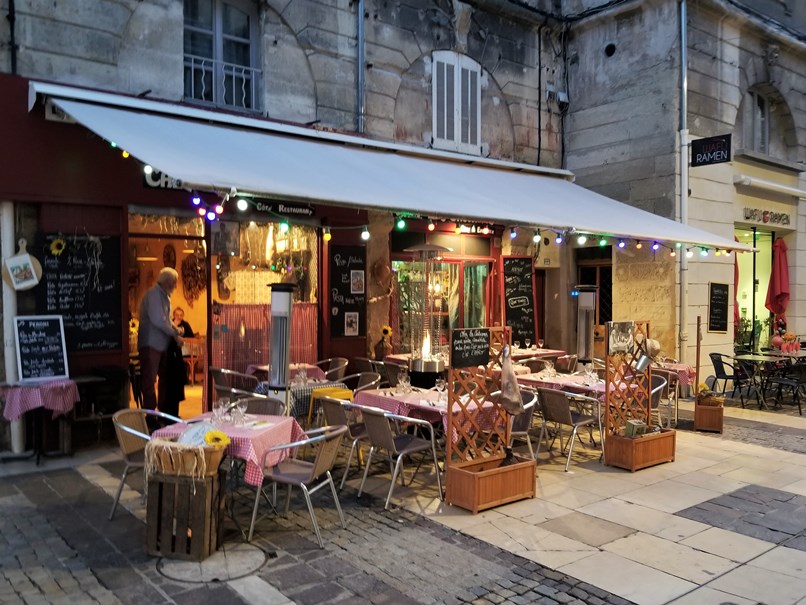
The Pedestrian street below our apartment.
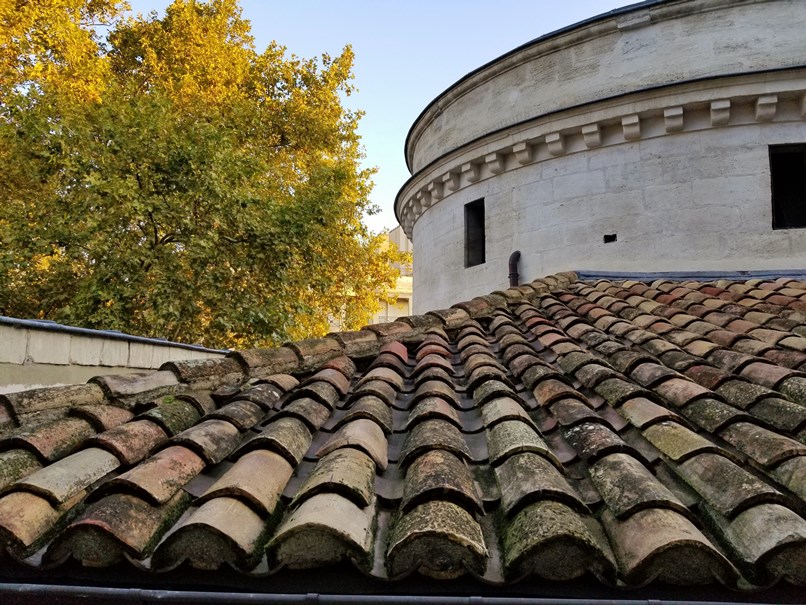
The domed rooftop of the synagogue.
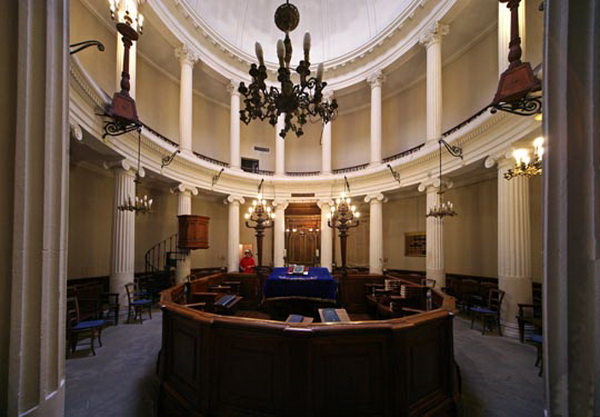
The interior of the synagogue.
If you are driving through Provence, a convenient place to park your car in Avignon is in the public parking garage adjacent to the famous Les Halles market, which is easily identified by its façade covered in a cascade of greenery. The market is in full swing from 6 am – 8 pm. To snag a parking spot, arrive before 8 am or after 1 pm Enter the old town on Rue Thiers, and it’ll be on your left.
Les Halles is a food lover’s heaven. The aroma of hot, freshly baked bread and baguettes floats towards the entrance; stalls are stocked with a smorgasbord of cheeses; fruits and vegetables ripened to perfection are a kaleidoscope of fragrance and color; the vendor who sells saucissons, meats, and salami, invites one to enjoy a sample; and the array of fresh seafood inspired me to prepare a spicy, traditional French bouillabaisse. We were hooked. Les Halles became ‘une visite quotidienne’ (a daily visit) during our stay in Avignon.
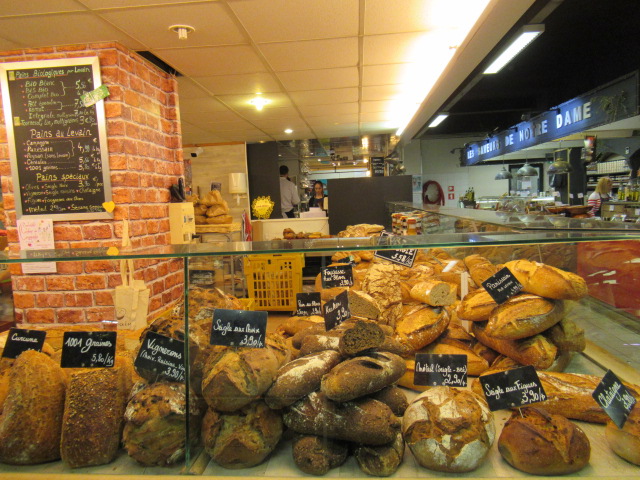

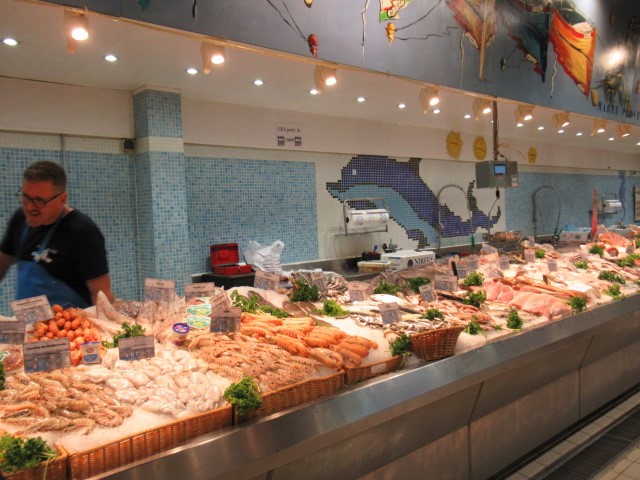
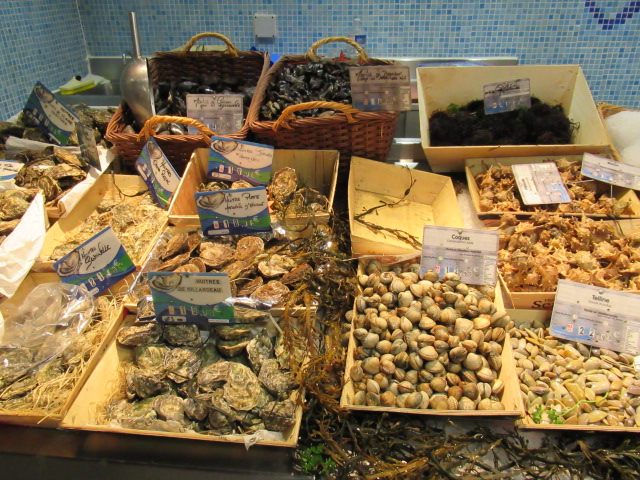
The spider’s web of pedestrian lanes meanders across “places” (squares) that are as enchanting and picturesque as all the photographs and travelogues, which entice one to visit Provence.
Directly across from Les Halles, you’ll find Place Pie surrounded by restaurants and cafes. From Place Pie continue to Place St. Jean Le Vieux, which leads one to Place Jerusalem, through Place Carnot, to Place des Chataignes – Chestnut Square, where you may want to stop, people-watch and enjoy a light meal or coffee and “patisserie” (pastry) under the chestnut trees at La Pause Gourmande or Des Copains.
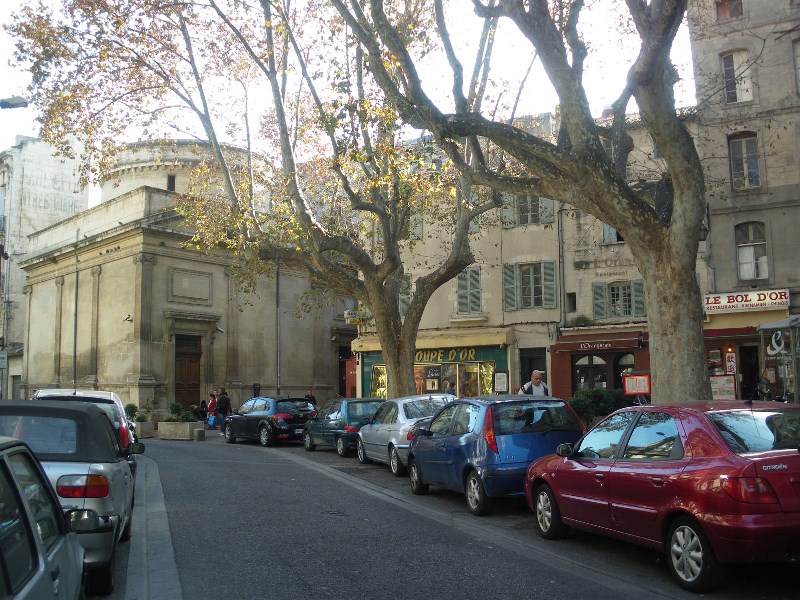
Place Jerusalem, with the synagogue in the background.
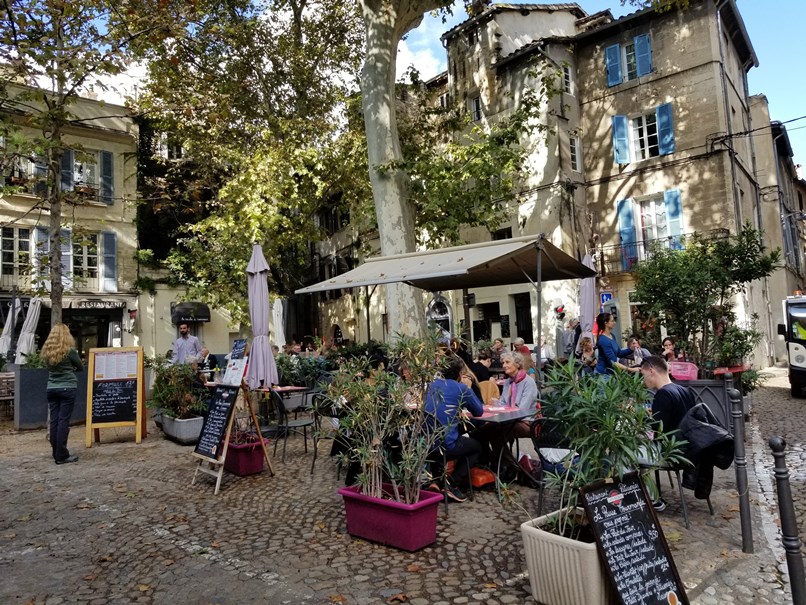
Place Chataignes – La Pause Gourmande.
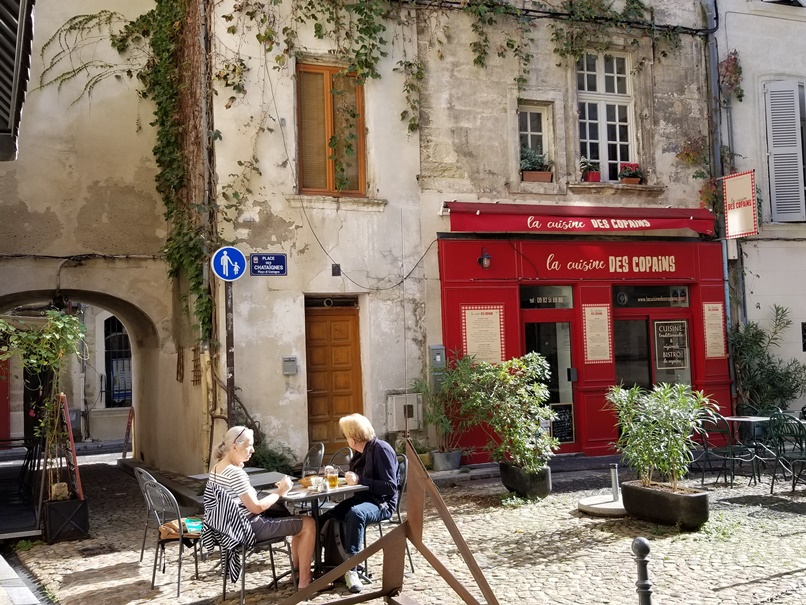
Places des Chataignes – Des Copains.
Follow Rue Banasterie, then make a left turn at Rue des Escaliers St. Anne, which leads to Les Rochers des Doms Gardens, the hill overlooking the Rhône River, which was the site occupied by the first inhabitants of Avignon 500 years ago. Here you can take in the panoramic views of Villeneuve, the city of Avignon, and Saint Andrews Fort that encompasses the 10th century St. Andrew Benedictine monastery. Villeneuve – the ‘new town’ expanded significantly during the 14th century when convents were founded, cardinals built their homes, and Pope Clement VI built a palace, in the ‘new town.’
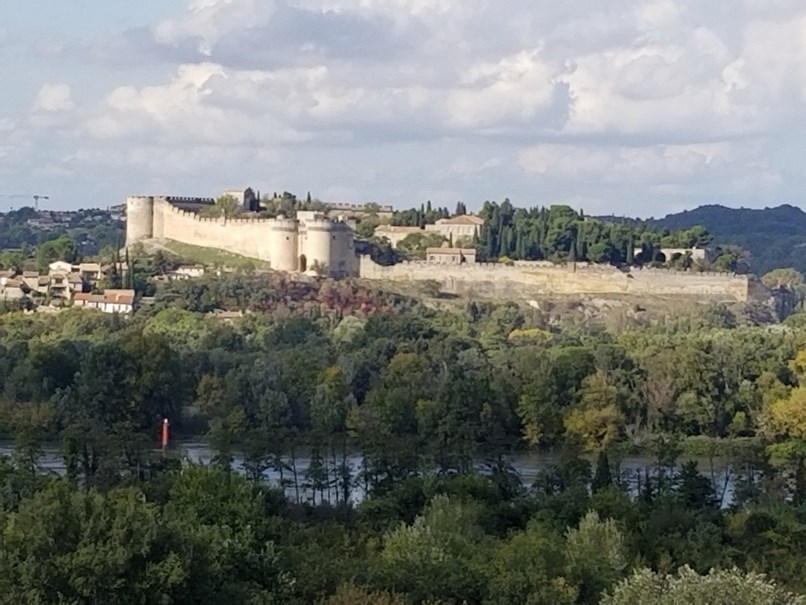
Villeneuve and Saint Andrews Fort.
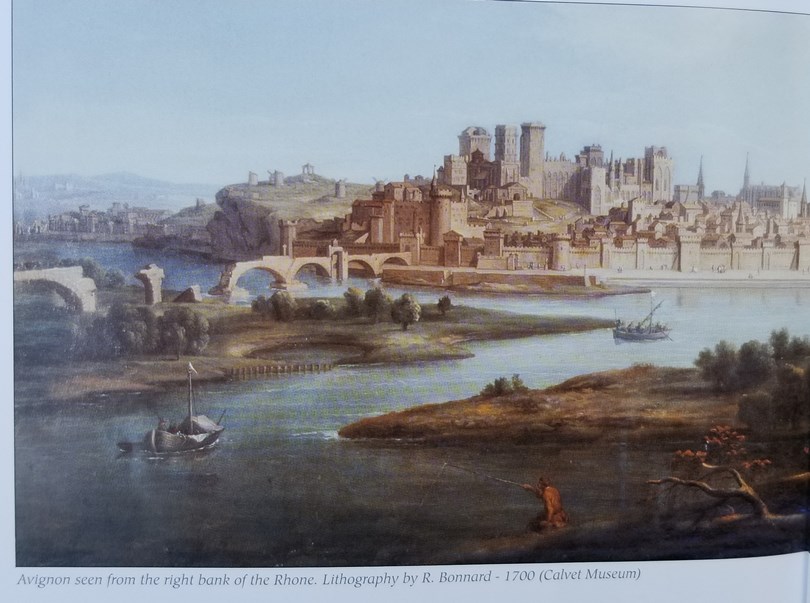
A photo of an artist’s 18th century rendering of Villeneuve.
The famous medieval Pont. St. Benezet (St. Benezet Bridge), which spans the Rhône River between Villeneuve and Avignon, was built from 1177 – 1185. Four of the original arches and one gatehouse at the Avignon side of the bridge, have survived. The bridge, commonly known as ‘Le Pont d’Avignon’, was the inspiration for the catchy children’s song that was popular across the globe.
Refrain: Sur le pont d’Avignon
On y danse, on y danse
Sur le pont d’Avignon
On y danse tout en rond.
On the bridge of Avignon
They are dancing, they are dancing,
On the bridge of Avignon
They are dancing all around.
When we visited, a grandmother was pointing out the bridge to her seven-year-old granddaughter, who broke into song and a dimpled smile. It took me back to my childhood in South Africa, where I learned the song and danced to it in nursery school.
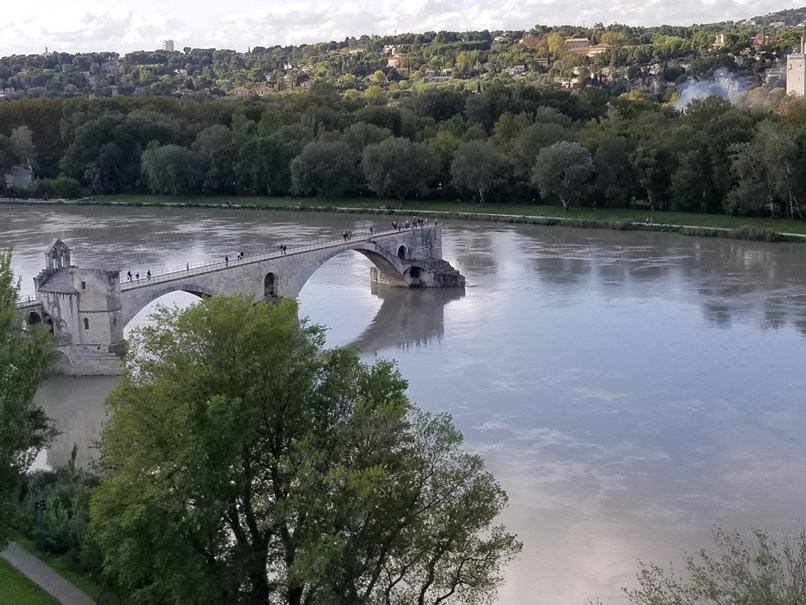
Take a walk through Doms Garden with its fountains, ponds, paths that weave beneath shady old trees, and its waterside café with a view of the whimsical statue of Vénus Aux Hirondelles (Venus of the Swallows). It’s a tranquil spot to rest awhile, soak up the ambiance, and enjoy an ice cream or cold beer.
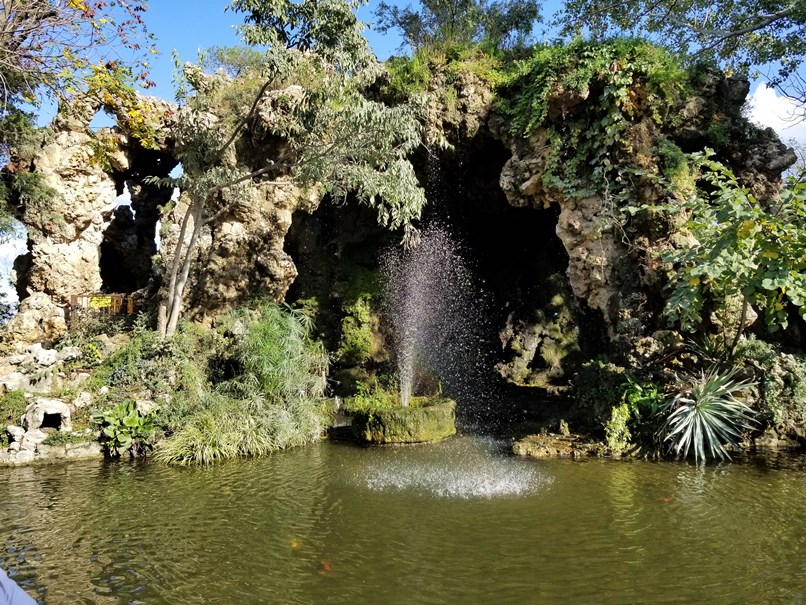
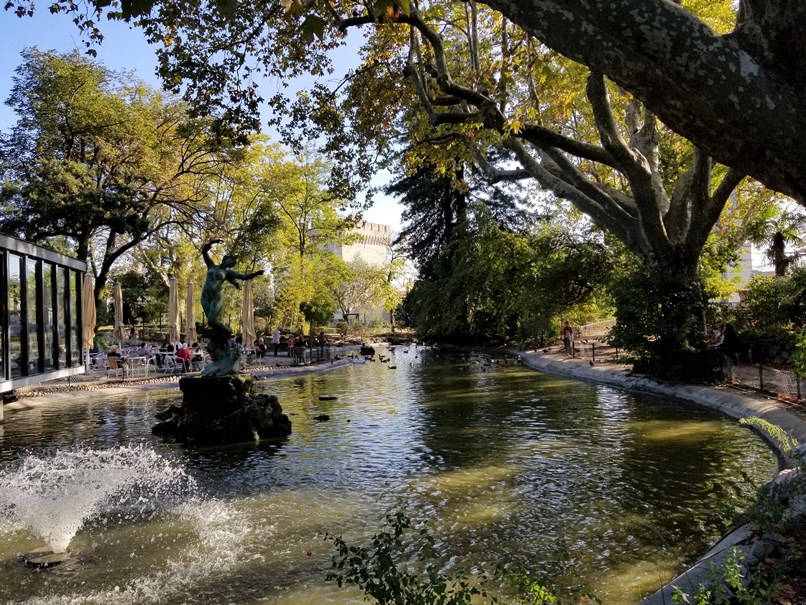
If you visit only one museum in Avignon, it should be Le Palais des Papes (The Palace of the Popes), which overlooks the expansive Place du Palais des Papes, where street performers, cafes, restaurants, ice cream parlors, and crêpes stands, draw a lively stream of locals and tourists day and night.
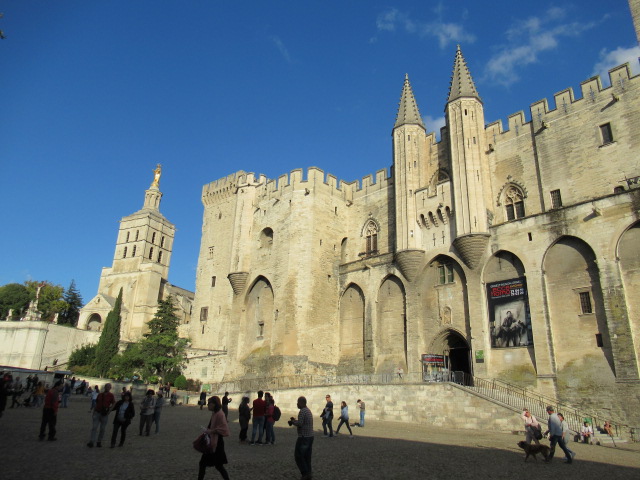
I recommend taking a self-guided tour with IPad and headsets that are included in the price of the tickets. They give one an excellent audio and visual explanation every step of the way so that one can see what each room looked like in the days of the popes. Tip: Plan your visit for the late afternoon when the tour groups have departed, and you’ll virtually have the site to yourself.
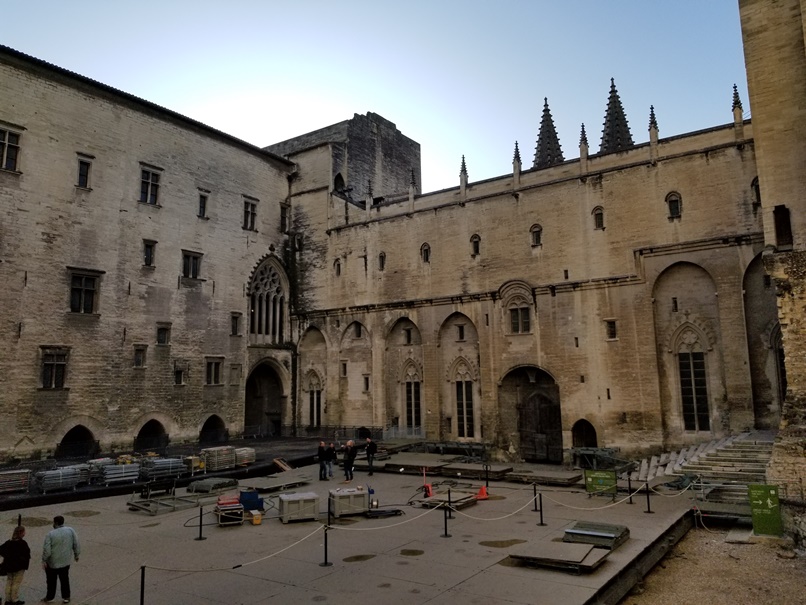
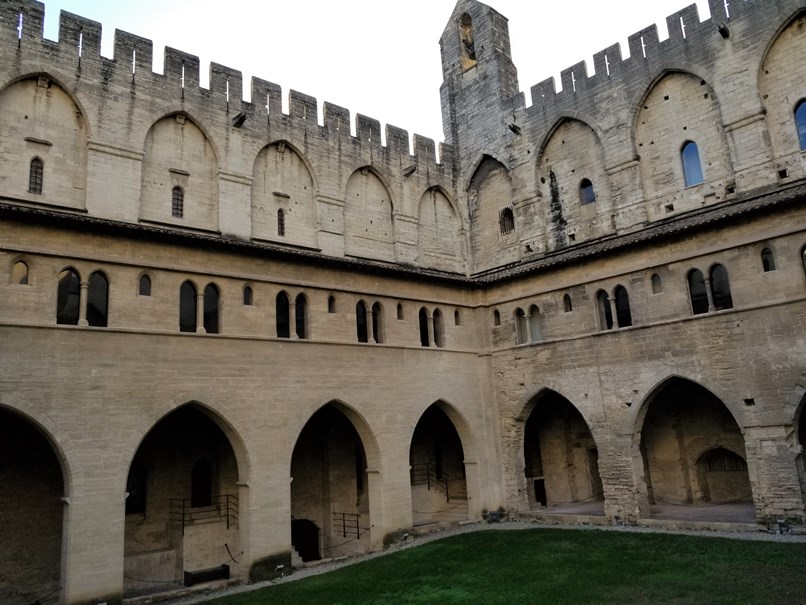
In the 14th century, Avignon became the capital of the Christian world. Seven popes held court between 1309 and 1423. Le Palais des Papes was built during the time of Pope Benedict XII and his successors Clement VI, Innocent VI, and Urban V, which explains the contrasts in styles and atmosphere. The Old Palace, built to the orders of Pope Benedict, is austere and unadorned, whereas the New Palace, constructed under the direction of Pope Clement and his successors up until 1364, boasts banquet halls covered with exquisite frescoes, opulent meeting halls, chapels, and the private chambers of the popes.
The size of the palace is overwhelming. The power and the wealth of the popes, mindboggling. They lived like kings hoarding money and jewels in fortified rooms concealed under massive stone slabs, in chests made of wood and iron, many of which were only discovered in the 19th century.
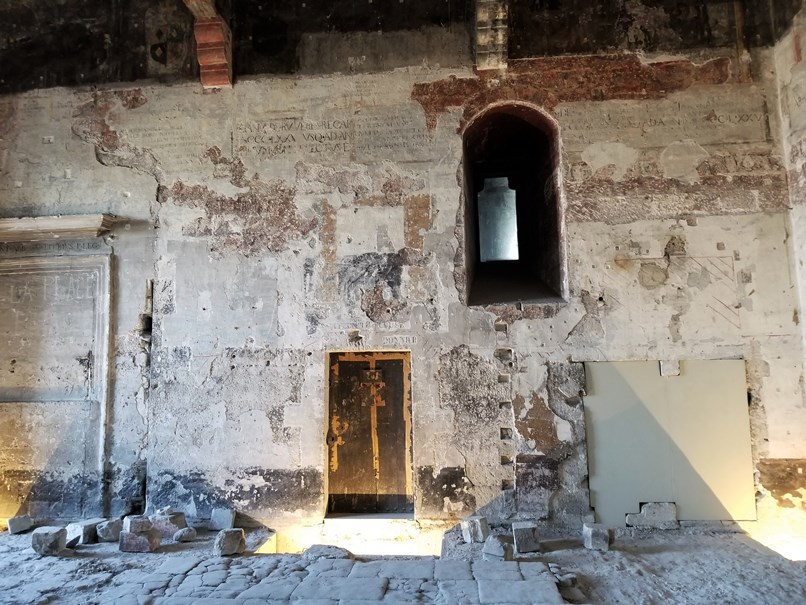
Glimpses of original inscriptions on the walls.
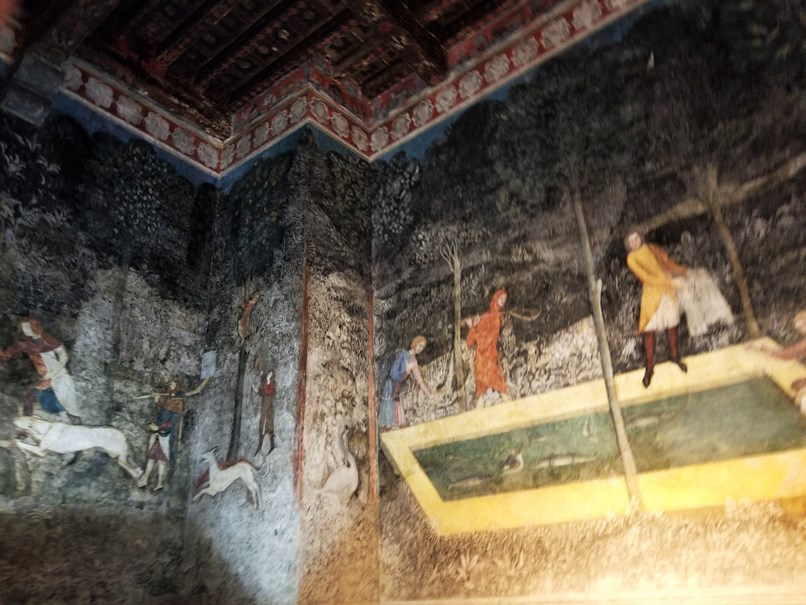
Frescoes adorn every inch of this chamber.
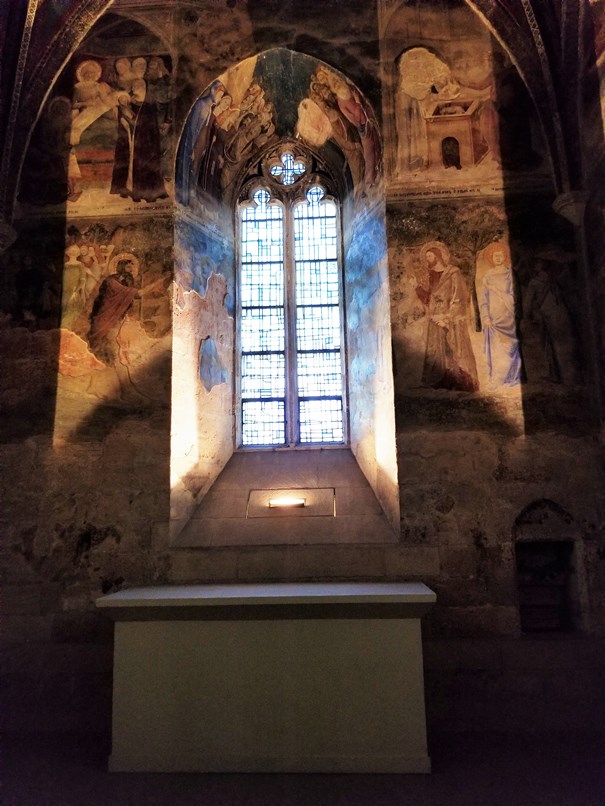
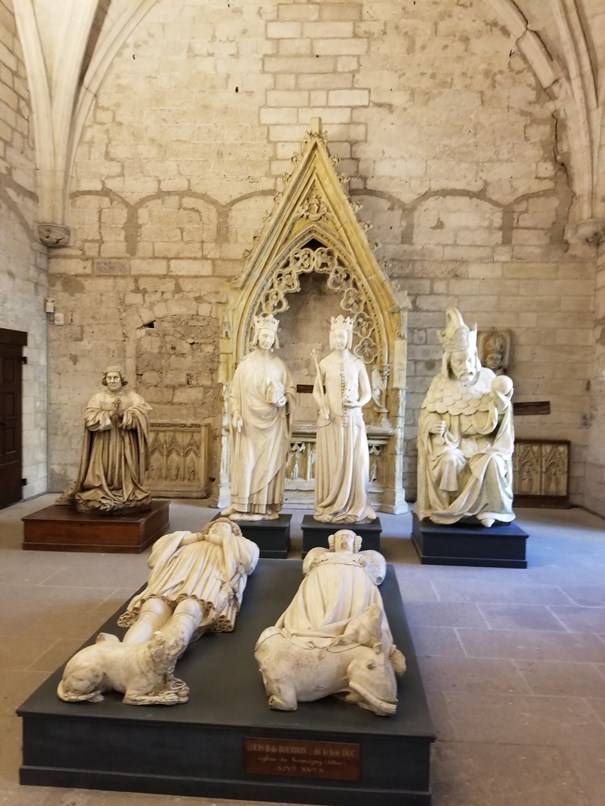
Place de l’Horloge is the main square of Avignon. We visited on a Saturday when the square was bursting with activity. Locals and visitors were strolling and delighting in the performances of buskers, while others enjoyed lengthy late lunches in the restaurants that surround the square. Artists were painting the stone tiles of the square; an old man wandered through the crowd playing his accordion; a wedding party sprinkled confetti over a bride and groom as they emerged from the “Hotel de Ville” (Town Hall). After posing for wedding photos, the entire wedding party, young and old, hopped onto the carousel, the centerpiece of the square.
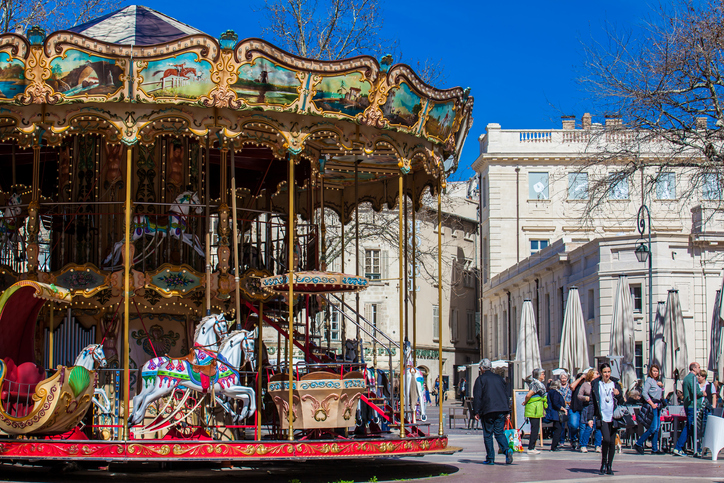
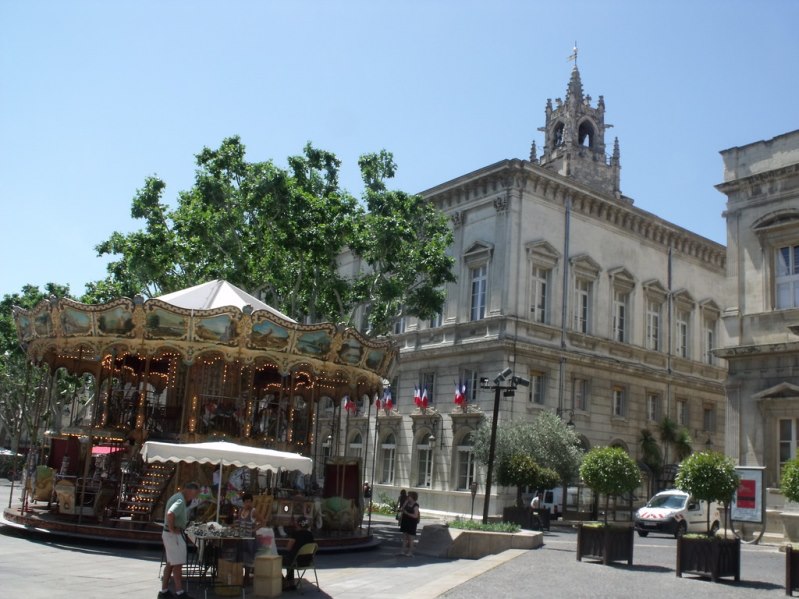
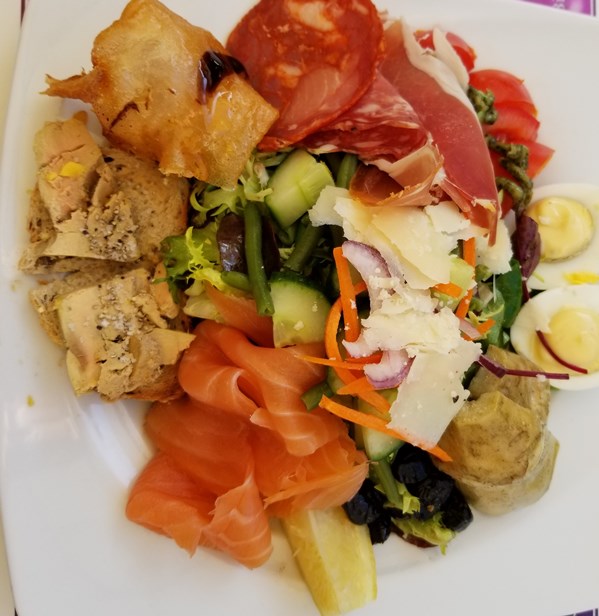
My scrumptuous lunch salad at Opera Cafe, on Place de l’Horloge.
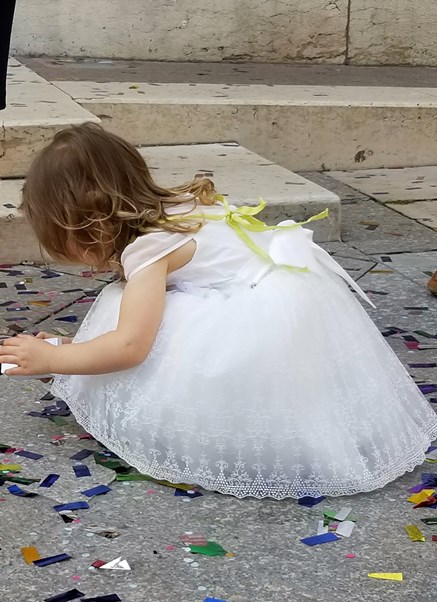
A Flowergirl from the wedding party collects the strips of confetti.
Rue St. Agricol, on the Southern end of Place de l’Horloge, leads into the upscale quarter of Avignon. Here you’ll come across designer boutiques and antique dealers on Rue Petite Fusterie and Rue Joseph Vernét, where you’ll also pass stately 17th and 18th century private homes and courtyards. Continue to Place Crillon – a secluded square that houses interior design stores, boutiques, and restaurants that laze in the shade of ancient leafy trees. The five-star Hotel D’Europe – with the warm, welcoming ambiance of an elegant old mansion – has been in existence since the mid-19th century. It occupies one side of the square and offers relaxed dining in its courtyard covered in vines and greenery. On the Western side of the Place Crillon, you’ll see Porte de L’Oulle, another gate and entrance to old town Avignon.
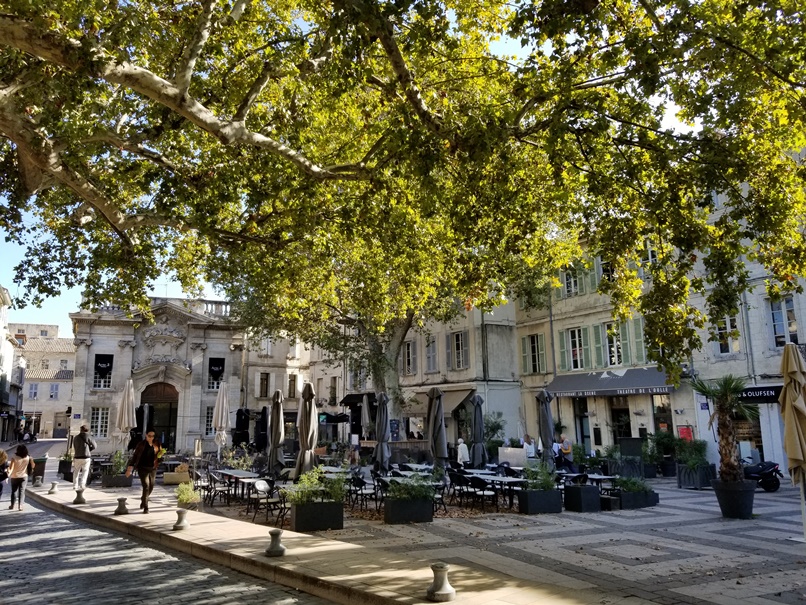
Restaurants laze in the shade in Place Crillon.
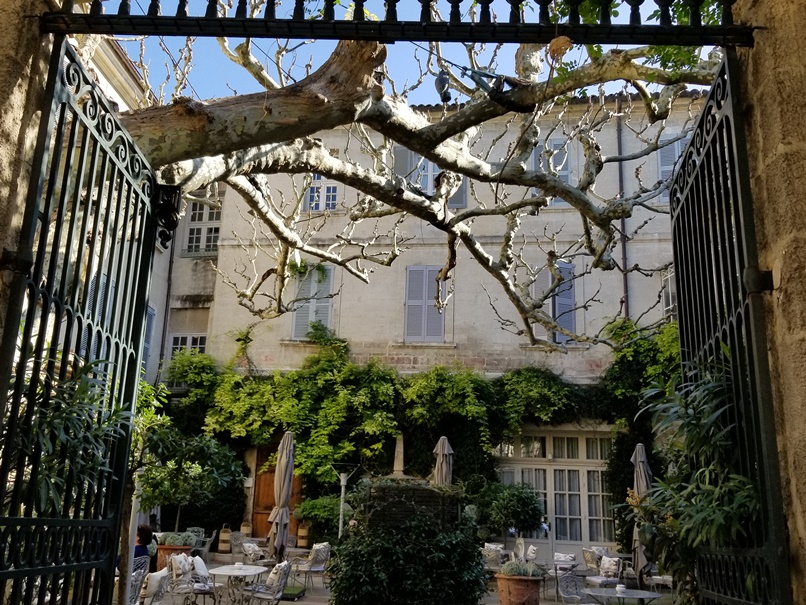
Outdoor dining in the courtyard of the Hotel d’Europe.
Rue de la Republique is a wide boulevard that leads into Place de l’Horloge on one end and into the new town and the train station on the opposite end. It’s flanked by an array of brand name stores as well as a host of eateries and irresistible pastry shops.
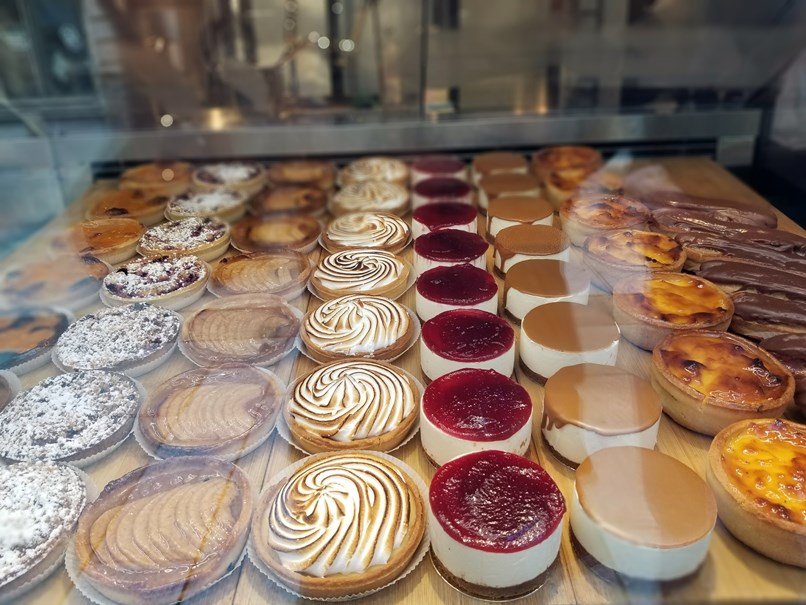
Pastry store on Rue de la Republique.
Heading south on Rue de la Republique, be on the lookout for a small street – Rue Fabre – that leads off Rue de la Republique. It’ll be on your left. Here you’ll encounter the Gothic style Temple of Saint Martial, initially constructed in the 14th century as a monastery. Abandoned during the French Revolution, it then passed through many hands and, in 1881, became a Protestant Church. Make sure that you walk around the exterior of the church through the serene, lovingly maintained gardens dotted with sculptures, where flowers bloom, birds sing, and the sound of the church organ drifts towards you. Admire the flying buttresses, absorb the quietude of your surroundings while sitting on a bench and munching on one of the mouth-watering pastries that you purchased on Rue de la Republique. Temple Saint Marie is a little spoken of, hidden gem that one has to be fortunate to stumble upon. It’s open for services on Sundays at 10:30 am.
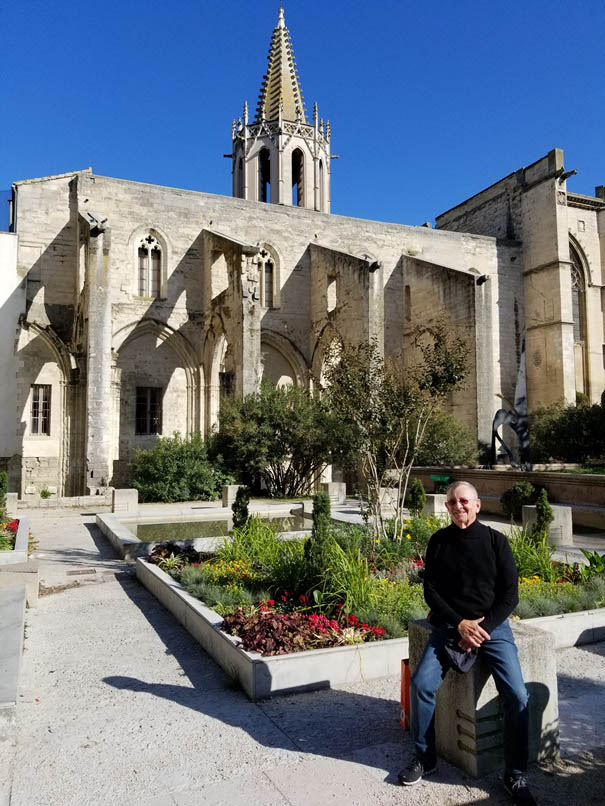
The gardens and flying buttresses of theTemple of Saint Martial.
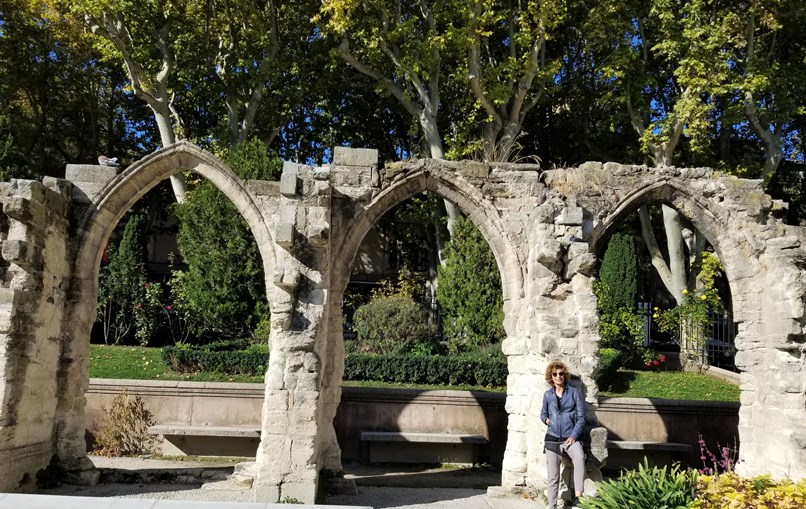
In the gardens where ancient crumbling arches enhance the beauty.
Rue Fabre becomes Rue des Lices. Follow it, and you’ll reach Rue des Teinturiers on your right, one of the most picturesque streets in Avignon. The Sorgue canal flows beside it; it’s planted with huge plane trees, and in its heyday, had in excess of twenty waterwheels. The street became the hub of the textile mills in the mid 15th century. In the 16th century, cotton print factories sprung up drawing dyers and tanners to the neighborhood.
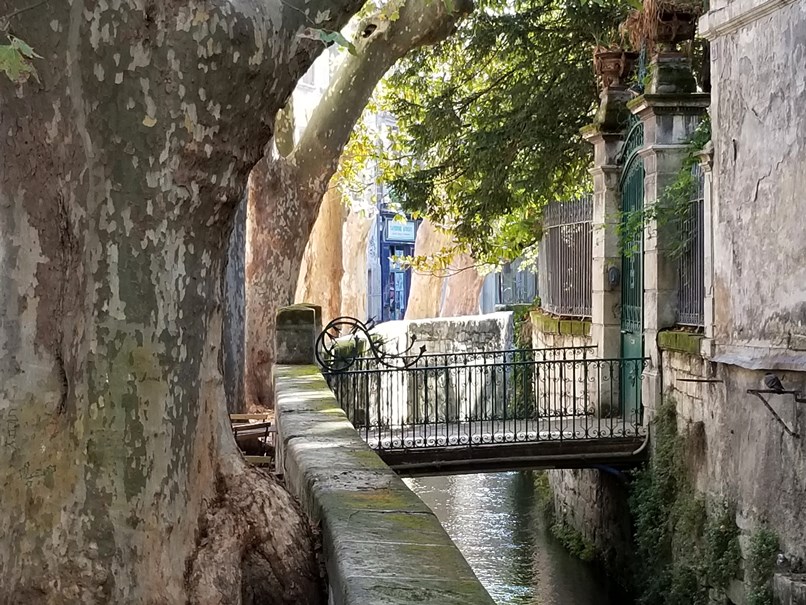
Don’t be put off by the first few meters of the street, which are run-down, full of dog poop, and sadly had drunks and drug addicts inhabiting the doorways of abandoned buildings. As one moves along, it changes. Cafés and galleries line the canal; it’s funky, laid-back, and utterly charming.
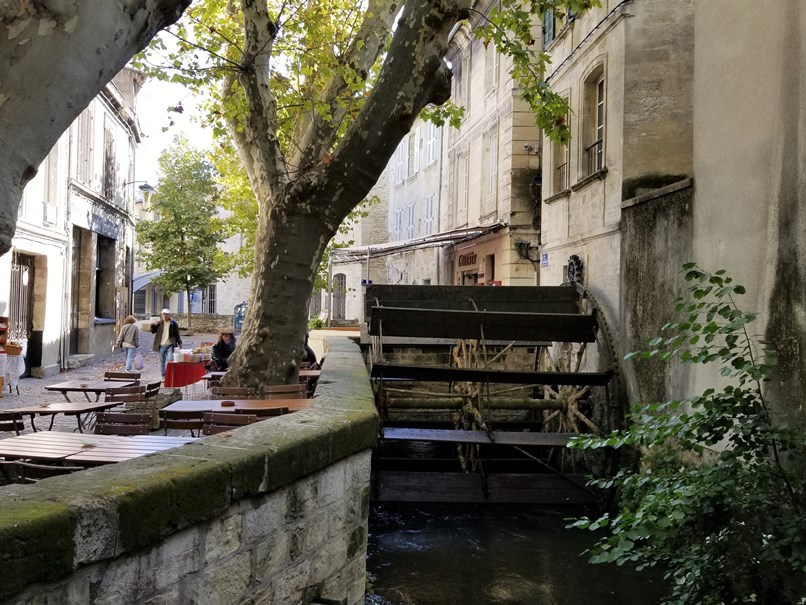
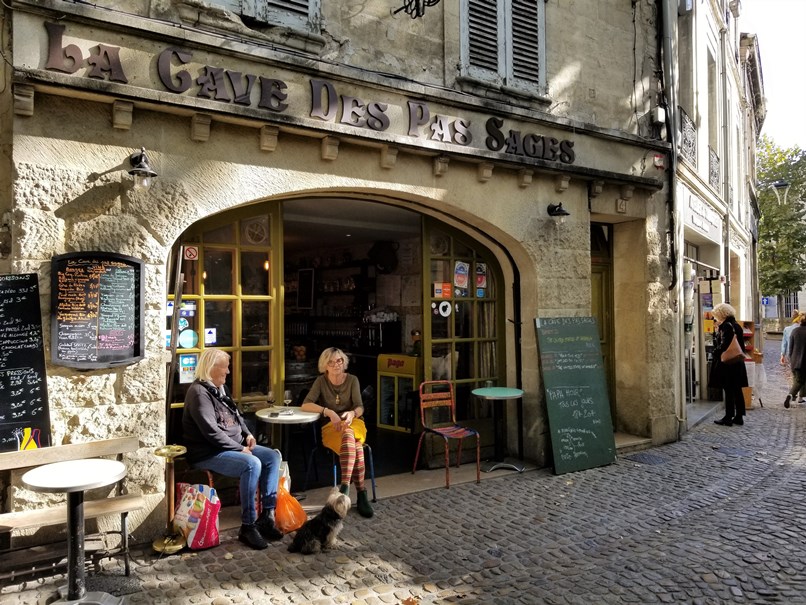
Rue Bonneterie will lead you through a warren of atmospheric lanes crammed with tiny stores and several more enchanting Avignon squares: Place de la Principale and Place du Change where you can make a right turn and land up where we started, at Place Jerusalem or make a left and find yourself back in Place de L’Horloge.
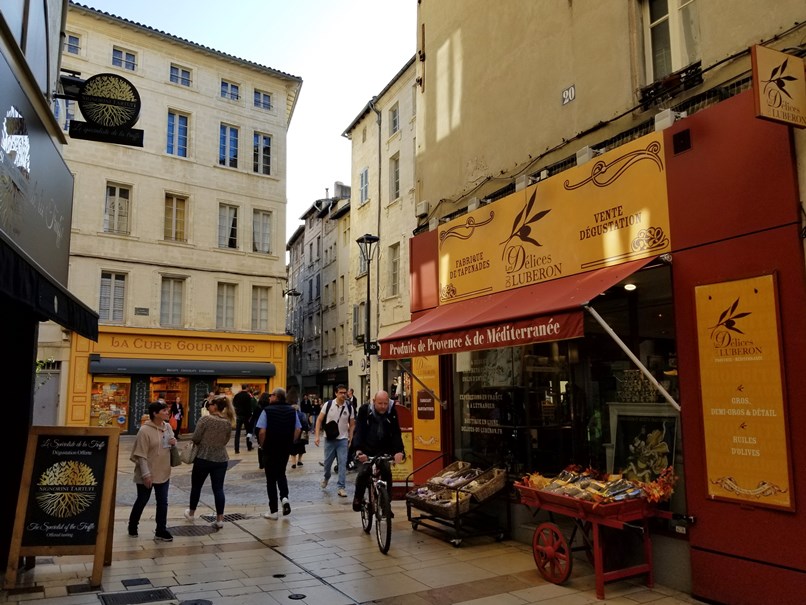
Avignon a warren of lanes brimming with charm.
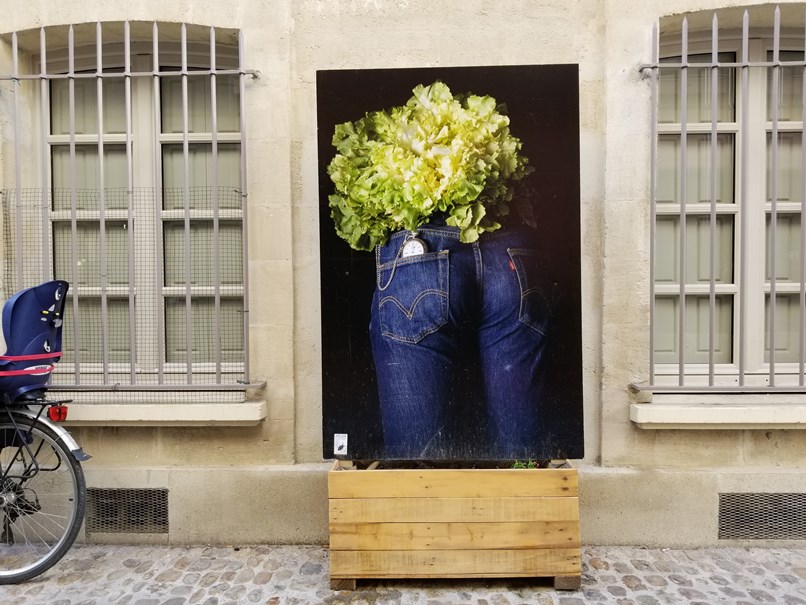
Creative advertising.
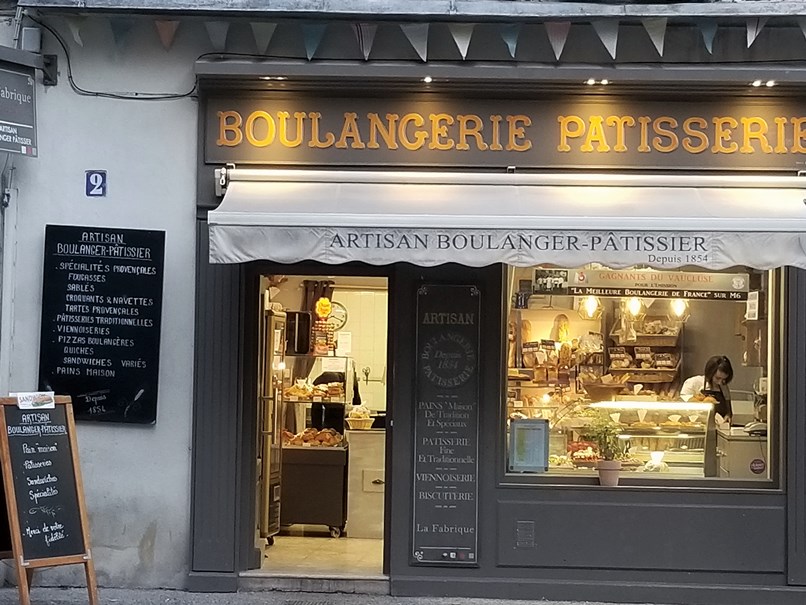
Quitessential French Bolangerie and Patisserie.
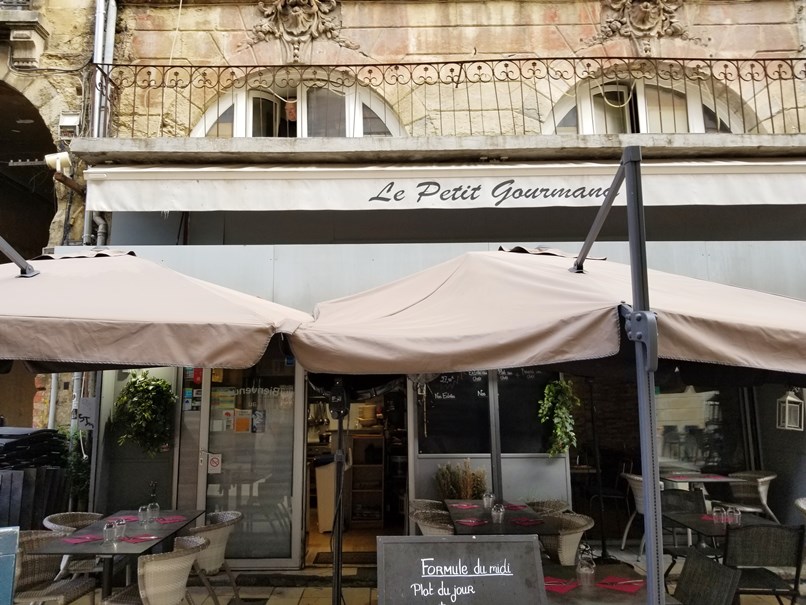
Atmospheric outdoor dining abounds in the lanes of Avignon.
While Avignon is gorgeous in the spring and the late fall, in the summer, it hosts an art festival – Le Festival d’Avignon – in the courtyard of the Palace of the Popes. Every July, the entire city of Avignon becomes one colossal theatre. It has the “In” festival, which runs from July 3rd – July 23rd, as well as the “Off” festival which runs from July 3rd – July 26th. Performances are held in unusual and historic venues across the town.
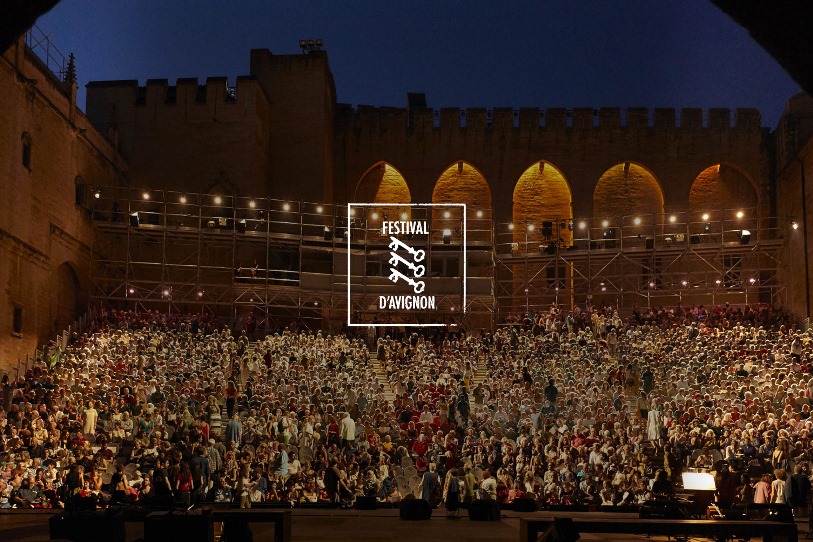
Disclosure: I did not take the following photos-
The Interior of the synagogue; the two photographs of the carousel; Place Jerusalem ; Avignon Festival.
